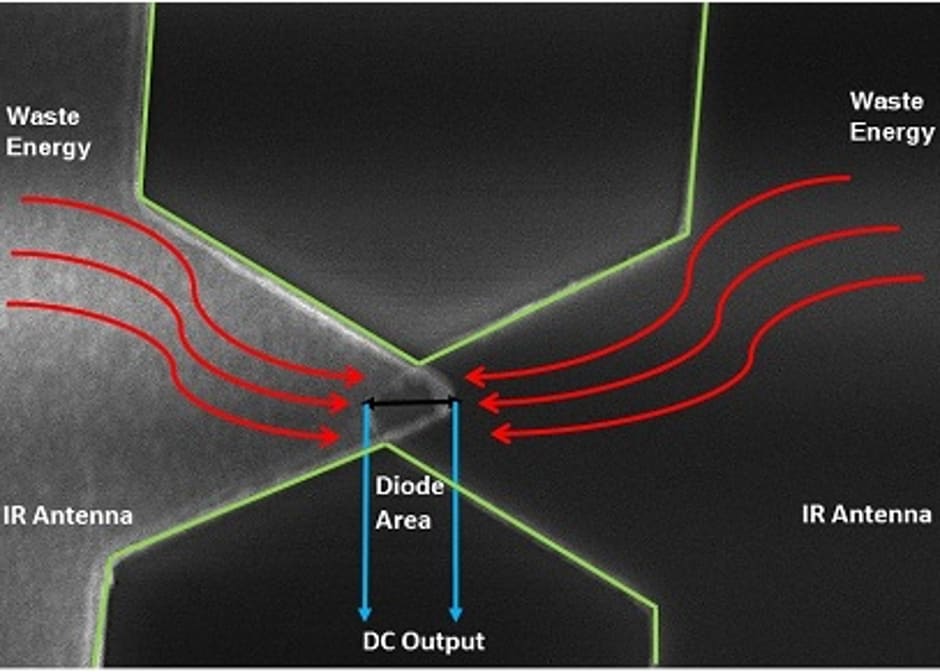
The team from KAUST (King Abdullah University of Science and Technology) has developed a proof-of-concept device that utilises infrared radiation, plus waste heat from industrial processes, by transforming quadrillionth-of-a-second wave signals into useful electricity.
Infrared heat can be harvested 24 hours a day and one way to achieve this is to treat waste or infrared heat as high-frequency electromagnetic waves. Using appropriately designed antennas, collected waves are sent to a rectifier, often a semiconductor diode, that converts alternating signals into an electric current.
According to KAUST, putting these 'rectenna' designs into practice has been difficult because infrared emissions have very small wavelengths and require micro or nanoscale antennas that are difficult to fabricate and test. Additionally, infrared waves oscillate thousands of times faster than a typical semiconductor can move electrons through its junction.
"There is no commercial diode in the world that can operate at such high frequency," said project leader Atif Shamim. "That's why we turned to quantum tunnelling."
The university added that tunnelling devices, such as metal-insulator-metal (MIM) diodes, rectify infrared waves into current by moving electrons through a small barrier. Since this barrier is only a nanometre thick, MIM diodes can handle high-frequency signals on the order of femtoseconds. To generate the fields needed for tunnelling, the team used a bowtie-shaped nano-antenna that sandwiches the insulator film between two slightly overlapped metallic arms.
"The most challenging part was the nanoscale overlap of the two antenna arms, which required very precise alignment," said postdoctoral researcher, Gaurav Jayaswal. "Nonetheless, by combining clever tricks with the advanced tools at KAUST's nanofabrication facility we accomplished this step".
By choosing metals with different work functions, the new MIM diode could catch the infrared waves with zero applied voltage, a passive feature that switches the device on when needed. Experiments with infrared exposure revealed the bowtie successfully harvested energy solely from the radiation and not from thermal effects.
"This is just the beginning-a proof of concept," said Shamim. "We could have millions of such devices connected to boost overall electricity generation."
A paper detailing the project - Optical rectification through an Al2O3 based MIM passive rectenna at 28.3 THz - has been published in Materials Today Energy.





Mandate sets 2030 date for use of sustainable aviation fuel
A quick read through the document...